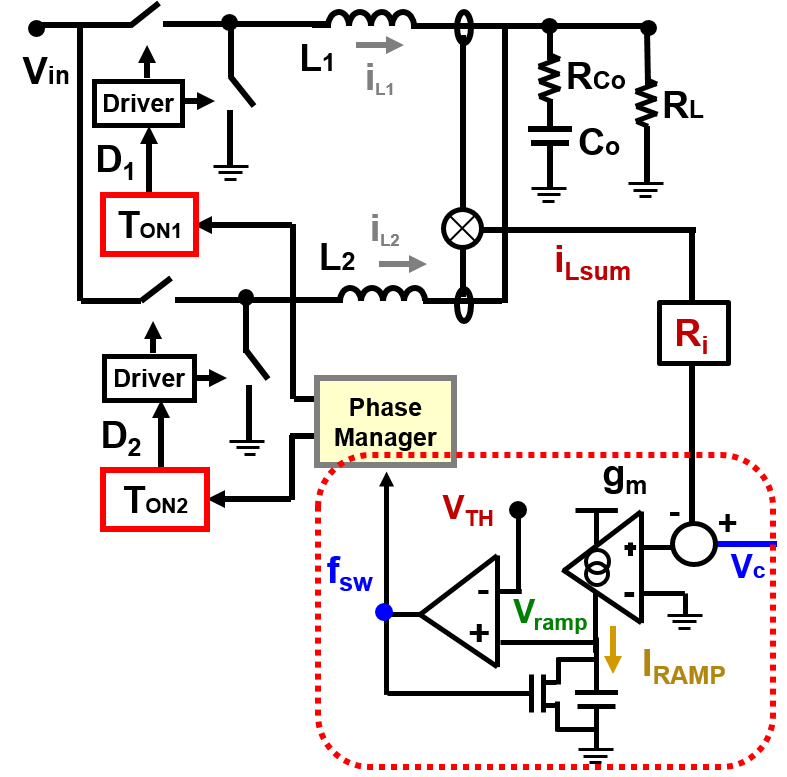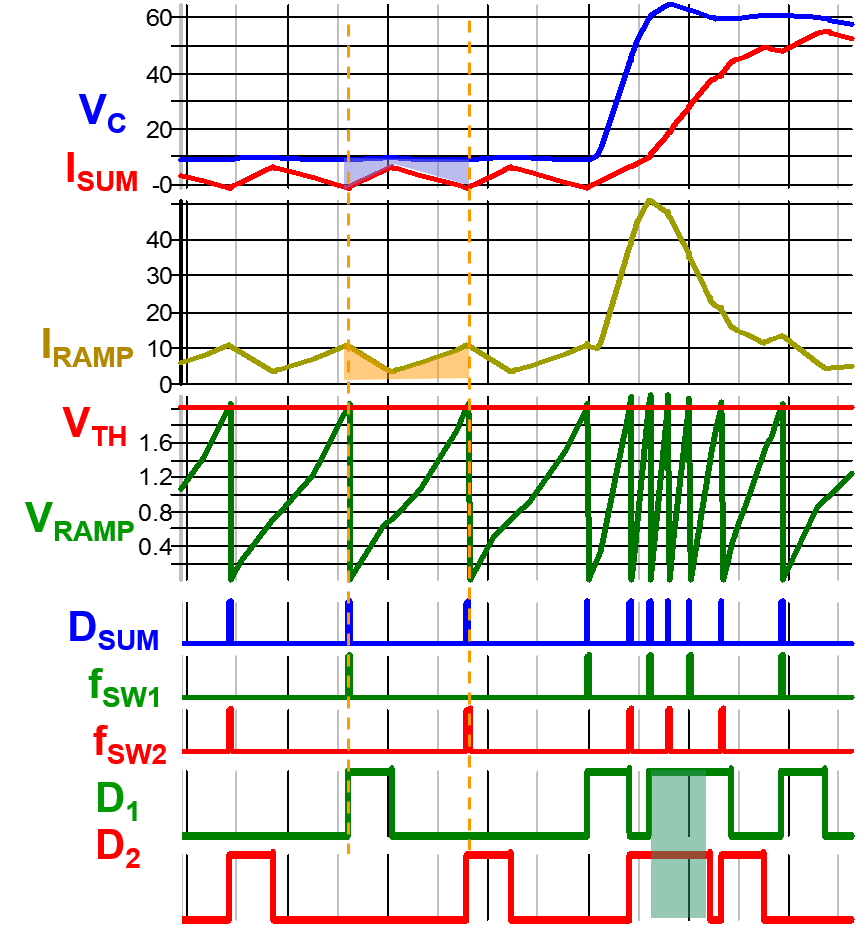LIBRARY
A New Inverse Charge Constant On-Time (IQCOT) Control for Transient Performance Improvement in Multi-Phase Operation

The proposed IQCOT structure (inside red box) with a 2-phase VR is presented in Fig. 1 where the difference between Vc and Isum*Ri is converted into current by using a gm amplifier and this current is used to charge a capacitor. Then this capacitor voltage (Vramp) is compared with a fixed threshold voltage (VTH) to create a pulse frequency fsw. When Vramp touches VTH, off time ends and a fixed on time (Ton) is started. This method is shown in the steady state part of the waveforms in Fig 2. In case of a large load step up transient, when Vc-IL*Ri becomes very large, fsw pulses can occur even before the end of the previous Ton time. In that way, the proposed IQCOT control can achieve the natural pulse overlapping feature between phases, (shown in Fig. 2) and improve the load step up transient performance. As in each phase, one Ton pulse can occur even before the previous Ton pulse finishes. They can also merge together to create a longer on time in each phase, using the proposed Ton generator. In that way, the proposed IQCOT structure enables the control to meet the high current with faster transient response requirement by achieving a smooth natural and linear pulse overlapping in a high phase count multi-phase operation along with natural and linear Ton extension at load step up transient. Test results are shown in Fig 3. With these two features together, the proposed control can reduce a significant amount of the output capacitor on the board causing a reduction in cost and space.
























































































